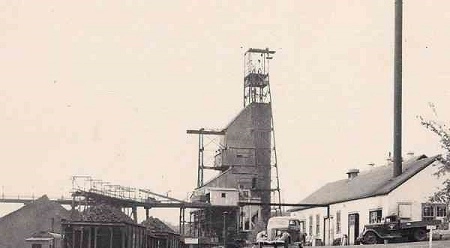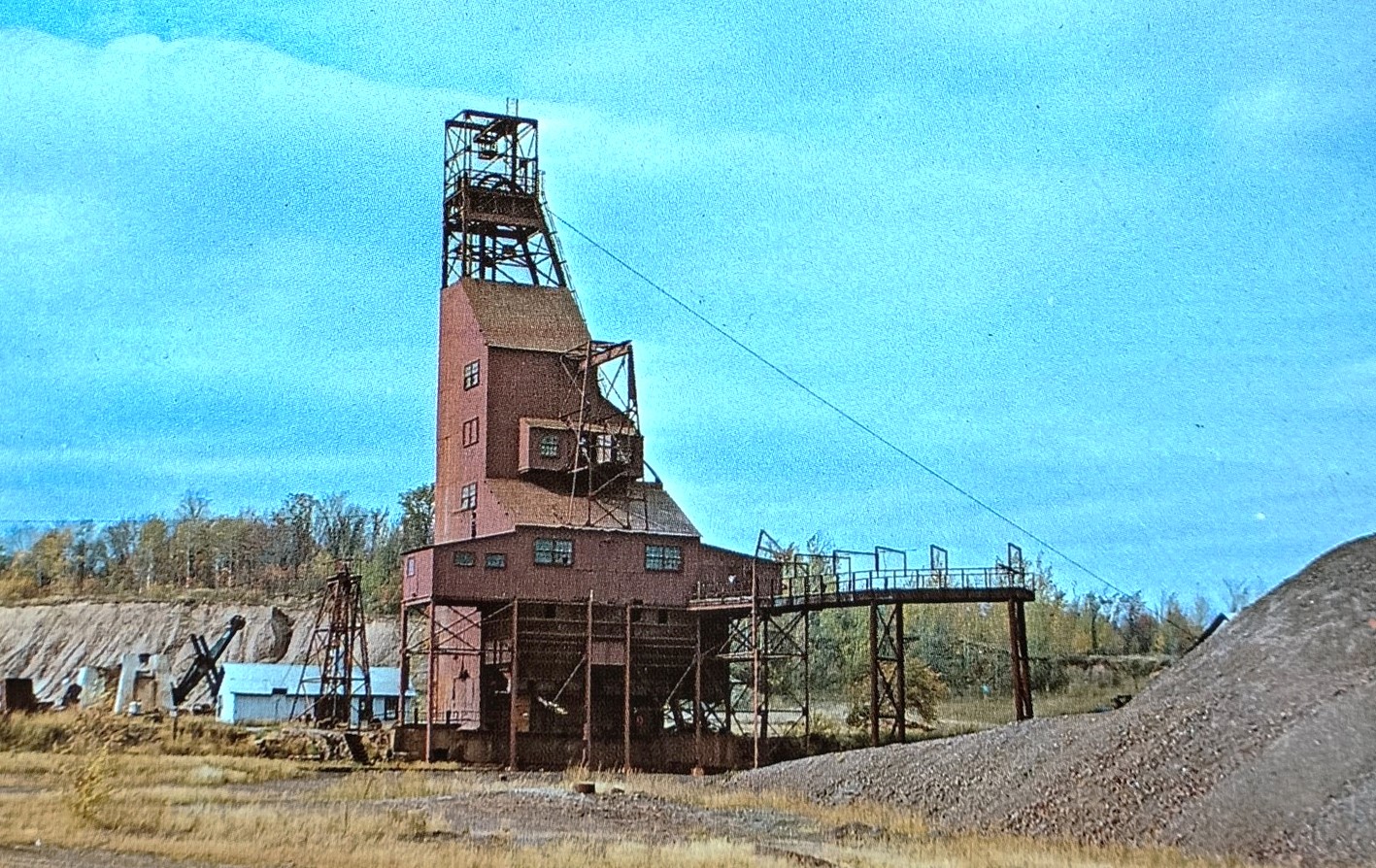- Details
- Hits: 2708
Mine: Hiawatha Mine No. 1, Stambaugh, MI
Various (see notes) → Hiawatha Mine No. 1 Mine → Became
Operated for 57+ years - continues in 1965.
From: 1893
Location: W 1/2-NE, NE-SW, S 1/2-SW and SE Sec. 35 of T43N-R35W. Includes NW-NE, part of former Wickwire; SW-NE, old Anna; S 1/2-SW of West Hiawatha; NE-SE of Chatham; SE-SE of Stegmiller; and NW-SE and NE-SW of North Hiawatha, all in Sec. 35. of T43N-R35W.
Owned by: Formerly by Munroe Iron Mining Co.; later by Hanna Iron Ore Co.
Produced: Iron Ore, hard, red, high phosphorus, crushed.
Method: Underground, by stoping method. Depth: 2,100 feet.
Railroad connection: C&NW to Escanaba ore dock.
Until:
Lifetime Production: 9,883,904 between 1893 and 1950. Includes Chatham mine. Continues into 1950's.
Notes
The Hiawatha Mine complex was located in Iron River and Stambaugh in Iron County.
For early history of Chatham, see Chatham mine page. North Hiawatha lease secured and property included in Hiawatha No. 1 in 1951.


Photo Info: Top, Hiawatha Mine No. 1 in Iron River and Stambaugh in the 1940's. 2nd image, another more recent postcard view of the headframe. [Alpha Mastodon Historical Society]
Time Line
1911. The Hiawatha Mine, located on the S. W. ¼ of the S. E. ¼, Section 35, 43-35 is owned in fee by the Munro Iron Mining Company who began work on the property in 1906. The shaft has been sunk to a total depth of 790 feet with levels approximately one hundred feet apart, the seventh or bottom level being at a depth of 757 feet.
The sub-level stoping system of mining is used to a large extent. The surface equipment consists of four return tubular boilers, 22”x48” Allis Chalmers first motion hoist with 7 ft. drum, 2,000-ft. Nordberg cross compound air compressor, McEwen D. C. generator, and a No. 8 McCully crusher. Tramming is done by electricity. The mine is provided with a one 1,200 gallon Prescott crank and fly wheel pump and one 1,000 gallon Prescott triple expansion pump. The yearly output is about 130,000 tons. Total production previous to 1911, 614,496 tons. [LSMI-1911]
1936. Shipping from stockpiles was speeded up as four mines put their shovels on a heavy operating schedule. The properties loading from ore in stock were the Bates and Hiawatha, the James and the Forbes. According to railroad officials, it was estimated that 60 cars, each containing from 48 to 50 tons would be loaded at each mine. This is the heaviest tonnage to be sent to the Escanaba docks so early in the season since 1928. In addition to loading from stockpiles, all active mines are shipping from the pockets. [IDG-1936-0505]
1965. This continues to be an active mine, owned by the Hanna Iron Ore Division of the National Steel Corporation. [DMP]

